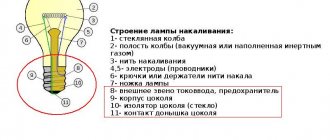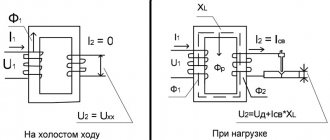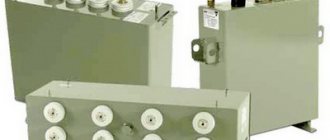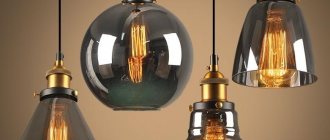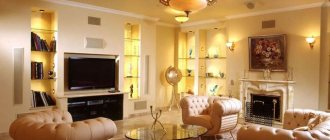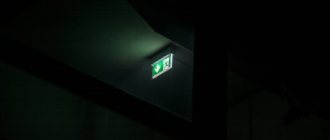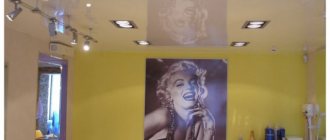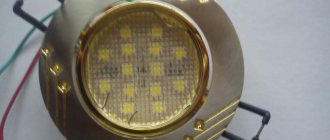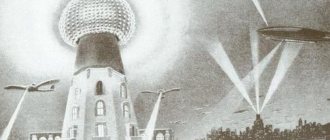Laser diodes LD
The nature of the emitted radiation depends on how photons are generated and emitted from the pn junction. In the case of LEDs, this is incoherent radiation containing waves of different frequencies and therefore different colors. Laser diodes emit coherent and monochromatic radiation in slightly divergent beams, which affects the capabilities and applications of both types of diodes.
As for laser LEDs, they open up opportunities for the production of blue diodes. Blue gallium nitride GaN laser diodes can emit light ranging from ultraviolet to blue (370–500 nm), depending on the chemical composition of the active layer in the semiconductor structure. The threshold voltages at which the laser effect occurs range from 3.8 to 5.5 V, and the threshold current density is in the range of 2–5 kA/cm2.
As with conventional LEDs, white light in laser diodes (LDs) is most often produced using a blue diode and a phosphor. But these diodes provide additional opportunities due to the fact that the phosphor can be installed not only next to the diode crystal in the same housing, but also at some distance from it (LARP - Laser Activated Remote Phosphors systems).
In addition, the phosphor can be applied to a substrate that transmits or reflects the beam. By using these capabilities and the associated optical systems to direct and focus the beam, a variety of lighting colors and geometries can be achieved.
How to connect
A feature of the laser diode is the high need for a stabilized supply voltage. At the moment of transition, a short-term increase in power is observed on the crystal due to the small area, which increases the concentration of energy at a given point. This makes it necessary to use a special stabilizer - a driver.
In addition, the element cannot be connected directly to the driver - it is necessary to use a current-measuring resistor, which is connected to the gap between the laser and the driver. In this case, the electrical connection between the power supply minus and the general minus of the circuit disappears. An additional disadvantage is the inevitable loss of power across the resistor.
Various devices can serve as a source of current for the laser:
- battery;
- battery;
- mains voltage 220 V through a special power supply.
The first two options are capable of providing a fairly stable supply voltage, but it is constantly decreasing, which is also unacceptable. If a standard type power supply is used, the situation improves somewhat, although in this case high-quality protection against breakdown or failure of the unit is needed.
With this connection, additional protection circuits and stabilizers are used to eliminate bursts and interference from network surges. Using a conventional diode bridge is not suitable in this case, since a lot of parasitic oscillations and interference pass through standard rectifiers.
Driver for laser diode
There are two main driver designs for laser diodes:
- impulse. This is one of the types of pulse voltage converter. Capable of working both to decrease and to increase the output voltage relative to the input value. The input power approaches the output, the difference between them is formed by some losses due to heating of the conductors;
- linear. Typically, it receives more voltage from the circuit than the rating of the semiconductor. The difference is usually compensated using a transistor, which releases excess energy in the form of heat. The efficiency of linear drivers is low, which is the reason for their limited use.
Important! For each type of driver, its own connection diagram is used, taking into account the specifics of the driver itself, the power source and the current-limiting resistor.
Superluminescent diodes
A superluminescent diode (SLD or SLED - superluminescent light emitting diode) uses the phenomenon of superluminescence to emit light. Like a laser diode, it has relatively high power and brightness, and at the same time - like a conventional LED - low coherence of the emitted light. In a diode structure, which is similar to the structure used in an LED diode, an optical fiber is made to amplify the light beam, but without reflecting mirrors. Example applications include optical coherence tomography, scanning interferometry, optical sensors, fiber optic gyroscopes, and fiber optic communications.
Step-by-step connection instructions
The most convenient way to create a laser installation with your own hands will be a red semiconductor, which has an output power of approximately 200 milliwatts.
Note! This is the semiconductor that any computer DVD player is equipped with. This greatly simplifies the search for a light source.
The connection looks like this:
- One semiconductor must be used for connection. They must be checked for functionality (just connect to a battery);
- choose a brighter model. When testing the IR LED (taking it from the computer player), it will glow a faint red glow. Remember that it
DO NOT aim at the eyes, otherwise you may completely lose your vision;
- Next, we install the laser on a homemade radiator. To do this, you need to drill a hole in an aluminum plate (about 4 mm thick) with such a diameter that the diode fits into it quite tightly;
- It is necessary to apply a small layer of thermoplastic between the laser and the radiator;
- Next, we take a wire-wound ceramic resistor with a resistance of 20 Ohms with a power of 5 W and, observing the polarity, connect it to the circuit. Through it you need to connect the laser and a power source (mobile battery or battery);
- the laser itself should be bypassed using a ceramic capacitor having any capacitance;
- Then, turning the device away from you, you should connect it to the power supply. As a result, the red beam should turn on.
Red beam from a homemade device
It can then be focused using a biconvex lens. Focus it for a few seconds on one point on the paper that absorbs the red spectrum. The laser will leave a red light on it. As you can see, we have a working device that is connected to a 220 V network. Using various circuits and connection options, you can create different devices, even a pocket laser pointer.
Laser diodes for pumping DPSSL solid-state lasers
It is also worth paying attention to the use of laser diodes in devices for producing green, yellow and blue laser radiation. Popular products in this group are indicators, devices for measuring and leveling distances, optical sights, as well as sources of information and warning light.
They also handle precision industrial operations such as drilling and trimming of PCBs and flex printed circuit boards, trimming resistors and cutting ITO boards, to operations, inspections and graphics work, as well as precision marking of products and their micro-machining, including materials such as like glass, silicon, ceramics and metals. Such lasers can also be used in medical and cosmetic surgery.
The initial component of DPSSL devices is a semiconductor GaAlAs laser diode with a power of several hundred mW, emitting an infrared wavelength of 808 nm. This radiation powers (pumps) a laser diode - an Nd: YAG laser, formed on the basis of an yttrium-aluminum garnet crystal doped with neodymium ions (or on the basis of yttrium orthovanadate, also doped with neodymium Nd: YVO4, which provides greater gain and compact design). This laser emits in the near-infrared region with a wavelength of 1064 nm.
The next step is to double the frequency (emphasize the 2nd harmonic) of the emitted wave, reducing its length to 532 nm, which corresponds to the color green. This is achieved by exploiting the nonlinear properties of the crystal, known briefly as KTP. This is potassium titanyl phosphate KO5PTi (or KTiOPO4). Using other materials, such as lithium tribrate LBO or barium beta borate BBO, it is also possible to triple or even quadruple the frequency of the radiation. When yellow light is required, the desired effect is achieved by controlling the wavelengths emitted using crystals from the groups of materials described. But there are other materials in DPSSL devices that emit blue light, such as barium and boron compounds.
Of course, the use of double conversion of emitted wavelengths reduces energy efficiency, but the positive aspect will be the ability to cheaply obtain strong focused beams of radiation of selected colors. Particularly high power levels (on the order of kW) can be achieved with pulsed operation of DPSSL lasers.
Types of cases
The popularization of laser diodes forced manufacturers to independently develop new types of packages. Taking into account their specific purpose, companies produced more and more new types of protection and cooling of the crystal, which led to a lack of unification. Currently, there are no international standards governing laser diode packages. Trying to restore order, large manufacturers enter into an agreement among themselves on the unification of buildings. However, before practical use of an unknown laser diode, you should always clarify the purpose of the pins and the wavelength of the radiation, regardless of the familiar type of package. Among commercially produced semiconductor lasers, the most common are two types with the following packages. 1 Devices with an open optical channel:
- TO-can (transistor-out-line metal-can package). The housing is made of metal and is used in the manufacture of transistors;
- C-mount;
- D-mount.
2 Devices with fiber output:
- DIL (Dual-In-Line);
- DBUT (Dual-Butterfly);
- SBUT (Single-Butterfly).
Application areas of LED and LD
The dominant position as light sources in lighting systems is now occupied by LEDs, which have already replaced incandescent light bulbs and fluorescent sources, as well as mercury and sodium lamps. This is due to its good performance and high energy efficiency, providing low operating costs and significant energy savings. But laser diodes have their advantage in a number of devices. This does not apply to relatively simple and massive lighting installations, but rather to devices and systems with special requirements. Such requirements can be effectively met using coherent light beams, especially at high power.
- The main areas of application of LEDs: lighting of residential, office, commercial and industrial premises, lighting of open spaces and infrastructure such as streets, sidewalks, squares, bridges, stadiums, tunnels, parking lots, buildings, display elements in signal and information systems, equipment and lighting for cars.
- Laser diodes are also used in various devices and systems, such as projectors, visors and glasses, outdoor lighting, stage lighting, and car headlights. In the latter case, with a lower output power than LEDs, the light range is almost twice as long (up to 500 m).
Driver classification
At the moment, there are two main types of drivers that can be connected to our semiconductor:
- pulse driver. It is a special case of a pulse voltage converter. It can be either downward or upward. Their input power is approximately equal to the output power. In this case, there is a slight conversion of energy into heat. A simplified pulse driver circuit looks like this;
Simplified switching driver circuit
- linear driver. The circuit typically supplies more voltage to such a driver than the semiconductor requires. To extinguish it, a transistor is needed, which will release excess energy with heat. Such a driver has low efficiency, and therefore is used extremely rarely.
Note! When using linear integrated circuit stabilizer microcircuits, the current will decrease as the input voltage across the diode drops.
Line Driver Circuit
Due to the fact that any laser diode can be powered through two different types of drivers, the connection diagram will be different.
